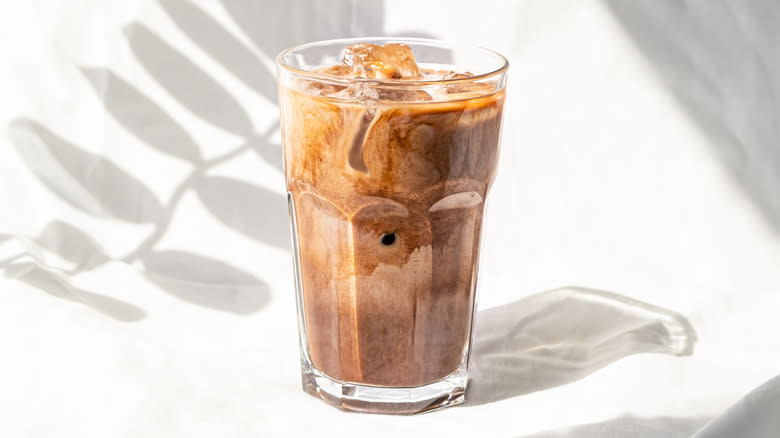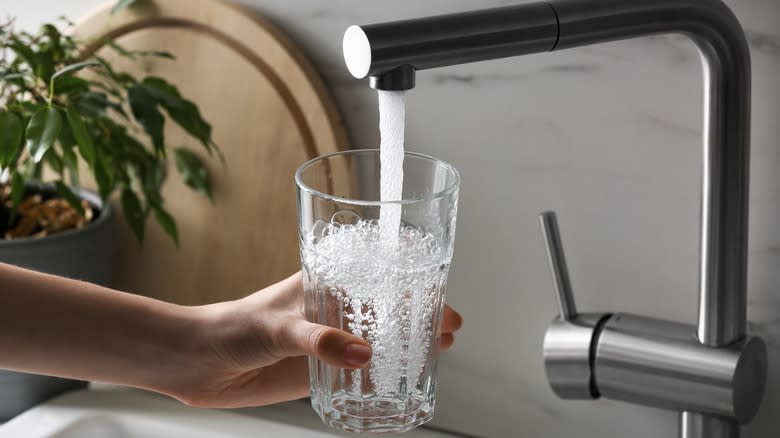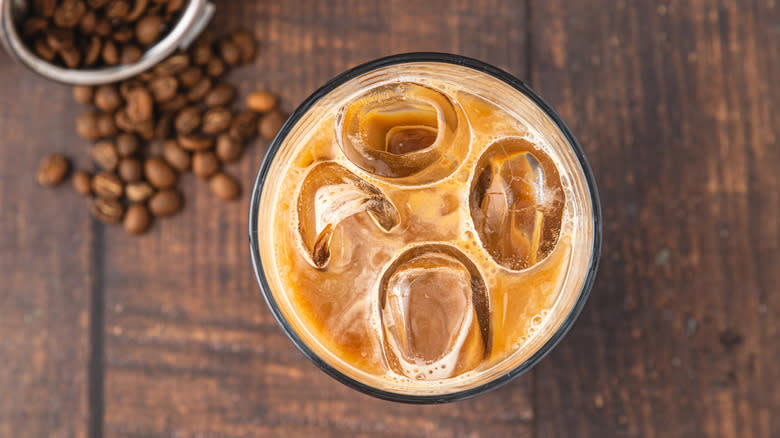For The Best Cold Brew Coffee, Your Water Matters More Than You Think

When you're planning to make cold brew, you're likely thinking more about the grounds than the water. But just like so many other things, most of the coffee you're drinking is actually water. And if you're really trying to get the flavor of your coffee — and especially your cold brew — just right, then you may be doing a disservice to yourself if you're not thinking about the water you're adding.
If you're normally picky about drinking distilled water instead of tap water, that doesn't apply here — tap water and filtered water work much better for cold brew than distilled. This is because minerals help the water extract more flavor from the coffee beans during the cold brew process (that's explained a little more below). Distilled water may be fancier, but in the distilling process, many minerals are leeched from the water so if you use distilled water, ultimately, you're leaving some extra flavor trapped in the coffee beans. One note, however: tap water varies from place to place and often contains extra things like chlorine that could affect flavor, so use your best judgment to avoid any cold brew mistakes.
Read more: The Absolute Best Energy Drinks, Ranked
Hot Or Cold

Remember, cold brew is not iced coffee, because iced coffee is simply regular coffee that's been cooled and poured over ice. Cold brew is a different beast: you make it by steeping course ground coffee beans in cold or room temperature water for several hours — this can range from 12 hours to a full day — which extracts lots of extra flavor and extra caffeine from the beans. Then you filter and pour the results over ice. You might also consider cold brew pitchers, which simplify things. While the end result is always cold, the temperature of the water can absolutely change the taste of your cold brew while you're steeping it.
Generally, room-temperature water works best, and cold water is fine although it might make the taste a little "flat and/or chalky," according to Kaldi's Coffee. Technically you could make cold brew using hot water and it would sort of work, but you'll have a much more acidic taste that's closer to regular coffee. This would be a time-consuming method that defeats the point because cold brew is meant to have a smooth, less bitter taste than hot coffee. Steeping in room temperature water pulls out those smooth flavors from the coffee beans, so the result isn't acidic and more flavorful.
Pouring In Extras

Coffee beans and water are the two must-haves, but there's plenty else you can experiment with. Of course, cream or milk can go into cold brew just like hot coffee, although it may not be as necessary — cold brew already has a mellow flavor unless you've made it super concentrated. So if you've added lots of water already, you might consider adding less milk than you'd add to normal iced coffee. Vanilla cream is another option if you want something that adds new flavor.
Alongside water and a splash of cream, you should pour in syrup instead of sugar if you normally take your coffee with sugar. Sugar may dissolve easily in hot water, but it doesn't dissolve as well in colder water. And syrups can also come in vanilla or cinnamon varieties if you want other avenues for adding those extra flavors in. Tap water and distilled water have minor differences in taste, so these extra flavors are an easy way to drown out those tap water flavors just in case you're not a fan.
Read the original article on Daily Meal.

